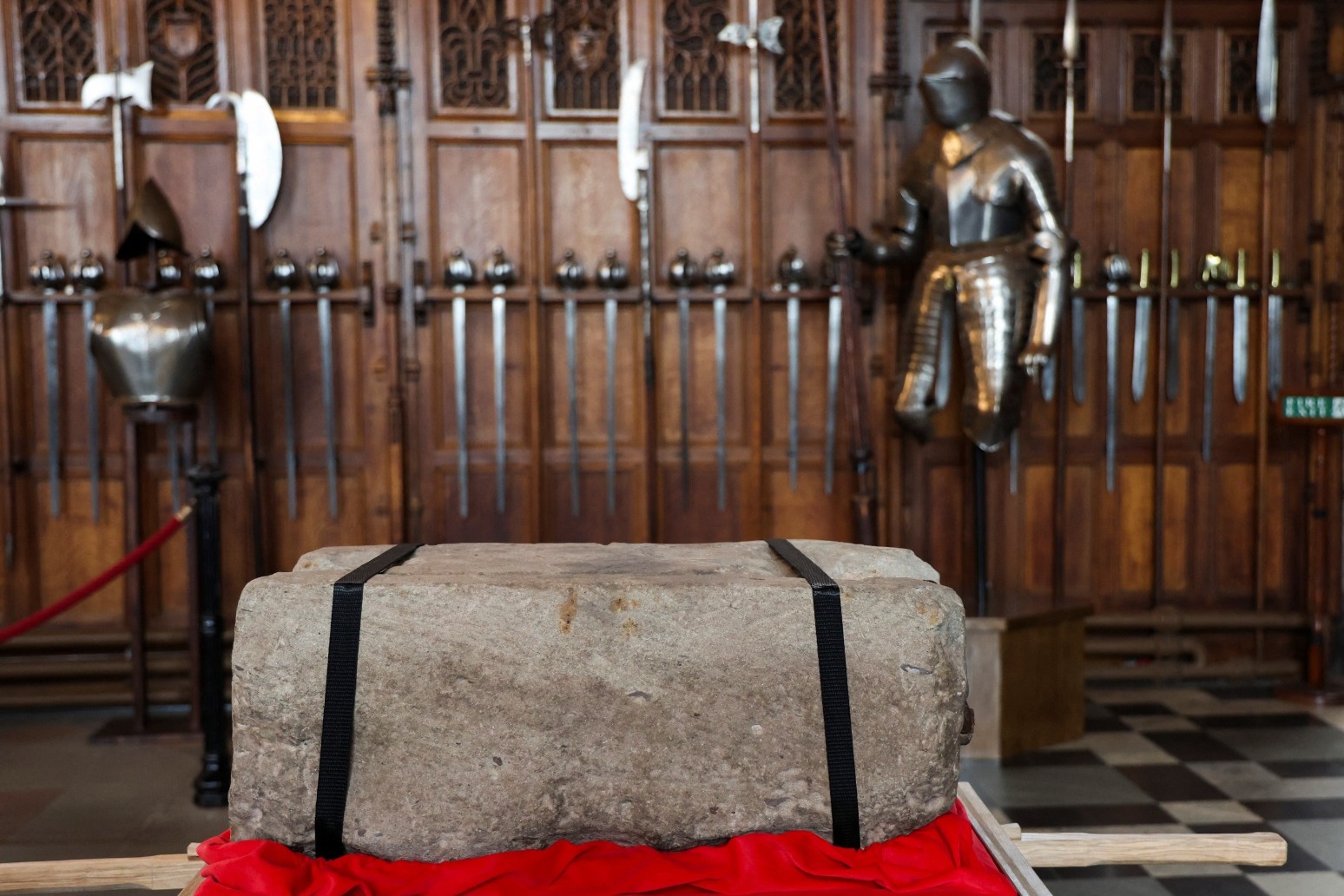
Stone of Destiny heads to London for coronation after leaving Edinburgh Castle
It's returning to England for the first time in more than a quarter of a century
The Stone of Destiny is returning to England for the first time in more than a quarter of a century, where it will play a key role in the coronation, amid tight security.
At Edinburgh Castle on Thursday a special ceremony was held to mark the legendary stone – which has become a symbol of Scottish nationhood but for 700 years was housed in Westminster Abbey – starting its journey south.
The procession was led by the Lord Lyon King of Arms – the monarch’s representative in Scotland – and attended by First Minister Humza Yousaf in his capacity of Keeper of the Great Seal of Scotland and one of the commissioners for the safeguarding of the regalia.
Mr Yousaf said after the service, which saw the historic stone piped out: “It was a very significant, historical moment. I’m delighted to be a part of it.”
The stone will now make its way to Westminster Abbey, where it will be placed in the Coronation Chair for the enthronement of Charles, before returning to Scotland and put on display in the Crown Room at Edinburgh Castle in the weeks that follow.
Colin Muir, senior stone conservator at Historic Environment Scotland (HES), has the task of helping to ensure that the stone gets to London safely and is installed into the Coronation Chair.
“We’ve assembled a team that’s involved in the transportation and installation of the stone and as part of today’s events we were carrying it as a symbolic gesture through Edinburgh on its departure,” he said.
The stone weighs 125kg but the team of six who carried it were lifting around 164kg given the equipment needed to transport it out of the Great Hall.
The Coronation Chair was specially built with the stone underneath, and getting it back in will be a challenge.
“It’s extremely tight. In fact it will not go in straight. It’s got bare millimetres to spare,” Mr Muir said.
The stone is more fragile than it appears after it was repaired in the 1950s, and HES experts built a 3D print of the stone and chair to better work out how to reunite them.
Kathy Richmond, head of collections and applied conservation at HES, said: “We’ve been working together with the collections team at Westminster Abbey to make sure that that’s all done really carefully.
“We’ve got to look after both objects because you’ve got to remember that the chair is also a very historic object that dates to around about 1300.
“So the teams have been working to come up with a plan, and they’ve done all sorts of testing just to make sure that it’s going to go smoothly.”
It is a high-security operation, with the stone a polarising object for many.
In 1950, it was taken from the Abbey in a daring raid by Ian Hamilton, Gavin Vernon, Kay Matheson and Alan Stuart, with it eventually being found at Arbroath Abbey.
Ms Richmond said: “We’ve been working very closely with Police Scotland to ensure that the transportation of the stone happens smoothly”.
Rhe Lord Lyon said: “This occasion is not only historic but underpins the traditions and values of Scottish life.
“The stone has played its role in many royal occasions, and it is fitting it returns to Westminster Abbey to have its rightful position in the coronation of their majesties.
“It will be in safekeeping and returned to Scotland for future events.”
The stone will be transported in a special carrier constructed largely from Scottish oak, which was made by the in-house carpentry team at HES to protect it while in transit.
The Stone of Destiny has been used for centuries in the coronations of monarchs and the inauguration of Scottish kings.
The earliest use of the stone and exactly how and when it became associated with king-making remains unknown, but legends around its origin strongly link it with kingship and the emergence of Scotland as a nation.
The last Scottish King to be inaugurated using a Stone at Scone was John Balliol in 1292.
Since then it has been used by English monarchs, and then British ones when James VI of Scotland ascended to the English throne upon the death of Queen Elizabeth I in 1603.
The last time it featured in a ceremony was for Queen Elizabeth II in 1953.
It was officially returned to Scotland in November 1996 and put on display at Edinburgh Castle on St Andrew’s Day that year.
Published: by Radio NewsHub